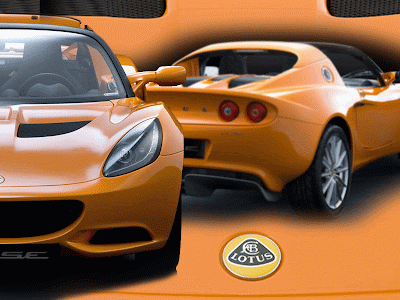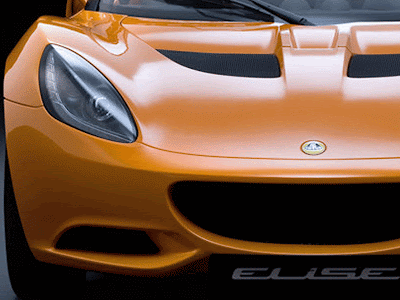British sports car company unveil at the Paris Motor Show the sun starts to rise for the dawn of Lotus' new era - the Elite will redefine "modern classic". So here it is, the Lotus Sports Cars Elite, the first taste of what's to come from Lotus in the future. This is not only beautifully elegant, in accordance with the burden of Lotus’ appraises, that car with the center consisting of several by the identical cutting-edge technological innovation Lotus has submitted a bid. Retractile hard top version of the cunning and consumption with optional cross with KERS technology is a special case with Lotus cutting technology to provide perfect performance.

The 2010 Lotus Sports Cars Elite Concept Car is labeled as a “production intent prototype and is scheduled to go on sale in 2014 with a pricetag around £115,000 (approximately $180,000). Set for release in spring 2014, this is an innovative, exciting GT that will set a new benchmark in design, performance and emissions. And it s not all about sleek lines and stunning bodywork with this particular 2+2, what hides beneath this shark like exterior perfectly does the aesthetics justice. A front-mid positioned 5.0l V8 engine delivering up to 620 PS meaning drivers can expect to go from 0-100 km/h in approximately 3.5 to 3.7 seconds.

2010 Lotus Sports Cars Elite Concept Cars
First up, the Elite will offer a retractable hardtop roof, adding significant weight to the automobile. It may weigh in at 3,600 pounds. This is a far step from Lotus’ usual super-light vehicles mentality. The Elite has a 2+2 seating configuration and is directly aimed at the competing with the Ferrari 612. 
"Make no mistake, there's a definite market requirement for the Elite - it's the ultimate sports car feel with comfort and space. There will always be those who believe that Lotus should stick to small sports cars but we didn't take the decision to design something like the Elite lightly, it's based on months of careful research and planning. It's worth noting this sector has been very successful for us in the past and now the Elite raises the benchmark higher still." As for the new, awesome design of the car, the designer Donato Coco has designed what can only be described as a truly stunning car. It is completely different from all Lotus models of the past and really indicates that Lotus is ready to move from the ‘affordable’ sports car market deep into supercar territory.

With the likes of Porsche, Aston Martin and Ferrari in its crosshairs, it’s not surprising that the new Lotus Elite sports car is significantly heavier and more powerful than the company’s current offerings. In fact, with an expected kerb weight of 3,637 pounds, the Elite is very different to Lotus’ usual assortment of light weight track cars but its designers are confident it will still have the ultimate sports car feel--just with a little more comfort and space. The design, specification and performance figures for all Production Intent Prototypes will be confirmed following official testing and will be available from Lotus Cars.






























































